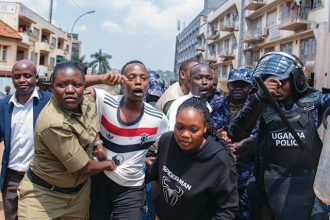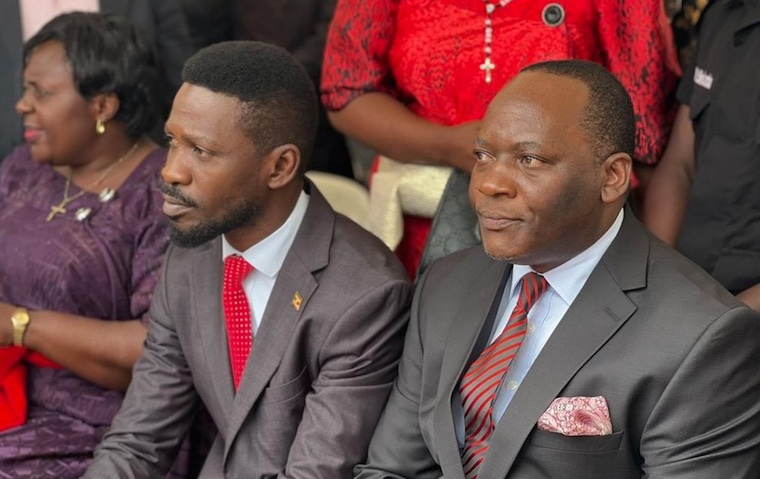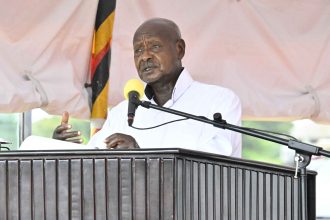All roads will lead to Kololo Independence Grounds on July 5 as Ugandans from all walks of life come together to celbrate the life and contribution of the man who has undeniably written the majority of Uganda’s history- General Yoweri Kaguta Museveni.
In the early 1950s, a youthful Museveni, then inhis secondary days set out to lecture the pastrol villages around his home in Ntugamo to better farming and animal keeping methodes as his very first step in a journey that has tutned out to be so impressive and perhaps the most inspiring in the country’s long history- both pre and post independence.
As we may all be aware, the NRM took power under President Yoweri Museveni in 1986 but that wasn’t without prior contributions and sacrifices. In the early 1970s, he led a group of feedom conscious young people to take part in the struggle for the liberation of the oppressed African people in Mozambique under the autocratic, oppressive Portuguese rule. These would later form a core component of the offensiv against the Idi Amin Dada dictatorship that ultimately redeemed Uganda in 1979. The current Head of State then took part in the subsequent administrations where he served as Vice Chairman of the Military Command and ultimately the State Minister for Defense proceded by a short stint at the East African Community docket.
Museveni was one of the three people who took part in the 1980general elections alongside UPCs Apollo Milton Obote and DP’s Paul Kawanga Ssemwogerere. Obote emerged the winner of the highly contested polls in which DP allged a barrage of irrehulatities. Museveni also contested the outcom of the process and contested by heading to the jungles of Luwero from where he waged a five year protracted bush combat against the Obote II government and the rest is history.
The years from 1986 todate have arguably been the most fruitful in te country’s centuries of existence. To mention but a few, below is a stock of some of the salient contributions of President Museveni’s illustrious leadership in the transformation of the country and it’s people.
He has managed to steer tje country to an average real economic growth from 1986 to 2019 at an impressive 6.1%,which is way above the average of most countries in the region.
Under his tutulege, the economy has expanded nine times since 1986 from Shs14.4 trillion to Shs128.5 trillion in 2019 while
GDP per capita has more than tripled from Shs0.92 trillion ($260m) in 1986 to Shs14.4 trillion ($3.96 billion) in 2019/20.
Domestic Revenue collection has gone up from a paltry Shs5 billion in 1986 to Shs17,589 billion collected in 2019/20.
As for the Kyeyo (Diaspora Ugandans) remittances have increased from $119 million (Shs440b) in 1991 to $1.4 billion (Shs5.2 trillion) in 2019.
Under Museveni’s chatismatic leadership, poverty reduced from 56.4% of the population to just 19.7% of the population living below the poverty line by 2019.
In the field of industrialisation the NRM regime has overseen j growth of factories from 80 in 1986 to 4,920 by January 2020 subsequently providing jobs to narly a million Ugandans.
Electricity generation is now 1,254MW, up from the 150MW generated in 1986.
As a result of the population’s access to electricity has increased to 42% up from 5.6% in 1991
Average Life expectancy by 2017 was 63 years, yet it stood at 48 years in 1995 and the maternal mortality ratio (per 100,000 live births) reduced from 506 in 1986 to 336 by 2016.
In the works sector,the total paved road network as a percentage of national roads stood at 21% (or 5,500kms) in 2019 up from 8% (or 1,000kms) by 1986.
The NRM has increased access to safe water from crisis levels in most parts of the country to 65% in rural and 72% in urban areas. This has been achieved through investment in various technologies in rural areas and the provision of piped water systems in various urban centres. Sanitation levels such as pit latrine coverage have also improved to a national average of 74%. Our focus on access to safe water and sanitation will continue with the aim of increasing piped water coverage in both urban and rural areas.
The NRM under President Museveni has ensured operationisation of the constitutional provisions on ownership of land. The Land Amendment Act, 2010, has strengthened the protection of tenants (Bibanja holders) from evictions by land grabbers.We have also put in place land units in the Police and the Office of the President to support handling of land issues. There are also continuing efforts to put in place measures that ensure availability of affordable decent housing for all the people of Uganda. To this end, the proportion of iron roofed houses increased from 61% in 2005/2006 to 68% in 2012/2013, while the grass thatched houses reduced from 38.2% in 2005/2006 to 31.6% in 2012/2013. The government pledges to continue to capitalise both the Housing Finance Bank and the National Housing and Construction Corporation with a view to improving housing, particularly in the urban areas.
The NRM also aims to develop a national physical plan and ensure proper spatial planning to ensure orderly and efficient settlement systems that enhance optimal land use and sustainable development. The NRM has made great strides in implementing what was promised in its elction manifesto promised five years ago. Among them are:
Creating and maintaining the environment in which people have a say in national issues that directly affect them.
Professionalising and equipping both the army and the police to deal with the modern security threats of terrorism.
Uganda is now secure and the situation will be maintained under the NRM leadership
The government has also contributed to peace and development in the region as part of our Pan-Africanist responsibility.
There has also been commitmnt to continue with our unwavering efforts to consolidate the establishment of the rule of law Increase people’s participation, empowering women and the youth, promote freedom of speech and worship, hold regular free and fair elections, and consolidate of equity.
The YK Museveni government as also l invested in training the youth to acquire skills required in the job market. Deliberate effort have been made to create an environment that offers opportunities to create jobs for the youth. Funding the youth who are not in formal employment to enable them create jobs for themselves and also employing others. A special fund for women and gradually increasing the coverage of the elderly persons under the Social Assistance Grant for the Elderly (SAGE). Presently the scheme has been rolled out in all districts where elderly persons (65 years and above) receive sh25,000 per month. In the last decade, emphasis has been put on developing infrastructure with a view to reducing the cost of production.Paved (tarmac) roads — These have increased from 3,000km to 4,000km from 2011 to 2015.Ferry crossings — They have also increased from two to nine, which has contributed to improvement of transport to areas accessed on water. Some of the crossings are shorter detours to some areas, meaning a reduction in travel time.
The focus now is to construct 2,025km of new paved roads, rehabilitate some of the old paved ones, construct 112 bridges and provide additional equipment to districts to enable them work on their roads.Water transport — There are ongoing efgorts to undertake new investments in water transport by constructing and deploying three ships on Lake Victoria, modernising Port Bell (in Kampala) and Jinja Pier, constructing a new port at Bukasa and launching six new ferries.All these will go a long way in improving water transport and also opening up new routes. For instance, the modernisation of Port Bell and the Jinja Pier will present the opportunity of passenger and cargo service on water between Jinja and Kampala.
Regarding energy, Bujagali hydropower project and several other small ones have already added to the national power grid, which increased the power generation from 300MW to over 850MW. Construction of new power dams at Karuma (600MW) and Isimba (183MW) on the River Nile have also been completd fully. The national grid power distribution to households from 11% to 15% and expanded the coverage by over 5,000km. With the completion of Karuma and Isimbaand the construction of additional hydropower and geo-thermal stations, investment in transmission and improvement of the distribution network power generation has drastically increased. These interventions have not only provided sufficient power for the country, but also will bing dowń the cost of electricity to consumers.
Working with sister countries in the region, the governmwnt has embarked on the Standard Gauge Rail (SGR) project together with Kenya, Rwanda and South Sudan. Works on th expansion of Entebbe International Airport and rehabilitation of upcountry airfields, which will remarkably improve air transport. Ther is also further comittment to continue improving infrastructure in Kampala, including designing and constructing a light rail for the city, and providing workplaces (markets). Relatedly, infrastructure in municipalities and towns are being revamped.
Above are just a few of the indelible achievements of President Museveni which, in my view makes it mandatory for every Ugandan to embracethe event organised to celebrate and appreciate him at Kololo on July,5 2024.
The writer is the Deputy Resident City Commissioner Kampala Central Division




















